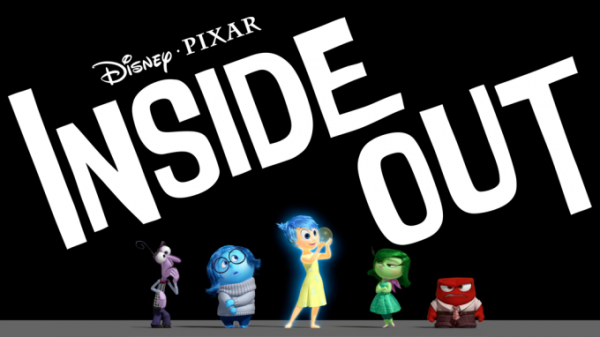Pixar very rarely shies away from heavier concepts and emotions in their films. Although they make movies intended for a young audience, they don’t often allow that restriction to hinder their stories and characters. While they’ve dealt with somber stories before, Inside Out does something bolder than those films ever attempted: explore why those feelings are important.
And it works fantastically. Taking place inside the head of eleven year-old Riley (Kaitlyn Dias), we get to know the five emotions that control Riley’s state of mind: Joy (Amy Poehler), Sadness (Phyllis Smith), Fear (Bill Hader), Anger (Lewis Black), and Disgust (Mindy Kaling). Due to an accident, Joy and Sadness are separated from Headquaters and must find their way back by navigating through Riley’s mindscape.
For what amounts to a simple setup in terms of the driving plot, the actual story becomes a deep and thoughtful examination into the purposes of our memories and emotions. Joy and Sadness are the first two feelings that manifest inside of baby Riley’s head, and Joy is as dismissive as she can be of Sadness from the outset. It’s this subtle conflict that becomes the core of the movie and creates what is easily Pixar’s most nuanced and mature look at the human experience. The film is basically an hour and a half thesis on the necessity of sadness and how it isn’t always the negative emotion it’s made out to be.
Though this all sounds like it might be overwhelmingly depressing, the movie supports its weightier center with pillars of hilarity. Inside Out is unbelievably funny, with a cast that never feels like they’re slumming it. Everyone is doing great work, especially Phyllis Smith. While Joy is the obvious figurehead of the film, it’s Sadness that I hope breaks out in a big way. Her Eeyore-esque deliveries are delightful, and when she’s asked to be sincere and moving, she delivers in spades.
Something I found surprising in the best of ways is that Inside Out is a wonderful science fiction film. Some would argue it’s more of a fantasy, but when you see that Pixar consulted with doctors who specialize in how our brains create and manage emotional responses, you start to see that this isn’t a simple flight of fancy. There’s a technological way to how Riley’s head operates, and although it’s draped in colorful and kid-friendly designs, it’s as valid an exploration about experiencing existence and what it means to be human as something like Blade Runner or The Matrix. Considering that Disney also gave us the mediocre Tomorrowland this year, I’m pleasantly shocked to find Inside Out to be one of the better sci-fi films I’ve seen in a while.
Another element that powers the film is a genuine sense of peril. It’s common to believe that tense moments in kid films are empty because you know everything has to turn out okay. Inside Out doesn’t pull these punches, and there are sequences of tangible loss that hit home in a big way. The fact that all of these moments are taking place within the mind of one person doesn’t diminish their impact. If anything, it strengthens them. By honing in on one character for the entire running time, Inside Out crafts a fully developed character who doesn’t need any stereotypical villains or outward forces to make the audience invested in her personal stakes. It’s a lesson that a lot of the emptier blockbuster films of this era could learn from.
I’m still riding high on this, but I’m close to declaring Inside Out Pixar’s best film. It tackles difficult concepts in a way that is both adult and exciting (Up will be most peoples’ defense to this, but I found Up‘s plot and world unexciting), it creates an entire universe that is uniquely imaginative and gorgeously realized (this film has the biggest scope of any Pixar movie, and it all takes place in a character’s head!), and its characters are immensely endearing. Add on top of that a story that ends up being about how all of our emotions are valid, even the “bad” ones, and you have the textbook example of what a movie for kids should be: accessible but never at the cost of treating its audience like children.
If you like how stupid I am, follow me at my blog, on Twitter, and listen to my podcast.
